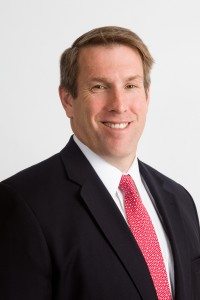
With today’s globally focused property/casualty insurance market, brokers wield the greatest influence, XL Group CEO Mike McGavick asserted at a recent industry forum in the U.K.
“Brokers hold the balance of power,” he said during a panel discussion at The Economist’s Insurance 2015 conference in London on March 3.
McGavick said they seek out the best underwriting, take advantage of the availability of ILS solutions and make certain regulations are adhered to. This reality, he said, has resulted in commercial clients seeking out reinsurance companies “with bigger balance sheets.”
Reinsurers and insurers in order to reap the biggest benefits from this dynamic, must be willing to explore and adopt new and innovative techniques, he said.
“They need to reinvent every step of the process,” from policy issuance to claims handling, McGavick explained. Underwriters, with this dynamic in mind, have to take a “much more open role in finding solutions,” he added.
Another panelist, Aon Benfield CEO Eric Andersen, argued that brokers have to have a global reach with areas of specific expertise to fulfill their role in the current market.
Andersen said brokers have to meet the “needs of scale” and be big enough to “meet global needs.”
It isn’t just sheer size that’s important; it’s global reach, Andersen explained.
“A broker has to be able to trade in many countries,” Andersen said. He noted that Asia and Latin America are becoming more prominent for brokers and that working in these emerging markets requires knowledge of those local markets as well as people on the ground who understand local need and rules and can help their customers.
Andersen also stressed the changing nature of the reinsurance industry within this global context, describing it as moving from primarily “concentrating on risk transfer” to a more creative role in finding solutions to address risks. This requires “getting together with insurance clients and understanding what their risks are.”

The solutions may not result in a traditional transfer of risk through insurance but rather more creative risk management solutions, involving captives, ILS or even self-insurance, as large companies with strong balance sheets can normally assume a good portion of their own risks, Andersen noted.
A renewed commitment to transparency in client-broker relationships is also linked to the necessity of becoming more knowledgeable about a client’s risks. “You need to have a ‘factual conversation’ with the client,” Andersen said.
As well, Andersen added that discussions should take place about what the broker does and how much the services cost.
“Transparent firms are stronger,” he said, as they perform a more consultative role for the benefit of their customers; they align their values with those of their clients, which creates a very positive relationship, even though they may have different ultimate goals.
McGavick said that commercial insurance has changed in the face of globalization.
“Globalization has affected all product lines; you have to serve your clients globally,” he said.
McGavick also noted that analytics are now an integral part of the insurance world, and while this has been the case in the past, it now “needs to be harnessed to better serve the needs of your clients.”
In addition, consolidation in the brokerage community, and the growth of available alternative capital, or insurance linked securities (ILS), has altered the face of reinsurance while at the same time a spate of new regulations has made capital more expensive, McGavick said.
The combined result of these changes has been to further the growth of large companies, both through consolidation and through the expansion of product lines across national boundaries.
Outside of Lloyd’s, only big companies are capable of providing the range of products and services increasingly necessary to properly write coverage for large commercial accounts, McGavick explained.
Dealing with the risks faced by a global business requires an equally global approach, Andersen argued.
“You have to understand the complexity of the risk,” Andersen said. “You can no longer be a generalist. You have to know and understand the nature of the risks, such as cyber—What is it? How do you solve the problems involved?”
Both Andersen and McGavick supported the idea that large insurers and brokers are a necessity in order to adequately assess the risks global businesses face.
“Having 10 [major] players is good for business,” Andersen said.
Insurers’ clients may not agree, however. Panelist Peter Den Dekker, who served as the president of the Federation of European Risk Management Associations (FERMA) and currently serves as the insurance and risk manager for VimpelCom, a telephone service provider, said that having only 10 major players raises the problem of consistency.
“What if all 10 have a different approach to the same problem?” Den Dekker asked, noting the industry must “find consistent solutions, along with sufficient capacity,” in order to adequately address the risks.
“And, don’t forget,” he added, “it’s the client who ultimately pays for it all.”
In that context, all three men essentially agreed that closer cooperation with their clients and achieving a greater understanding of their increasingly complex need is absolutely essential.
“You have to spend time with your clients,” McGavick said. “You have to find out what their needs are and to compete for [better] risk mitigation. You need to work through the risks.”
Added Andersen: “In order to build [appropriate] coverage, or to mitigate or transfer risks, you must find out what the problems are…You have to spend money to understand the clients’ needs and then to develop a product to address them. That’s hard to do.”
Andersen said the client pays for the services, but they also push the broker hard on execution. Overall, brokers must “be efficient, and they must stay relevant in a global market,” he concluded.
While the main focus of the discussion dealt with the problems faced by large brokers, insurers and global companies, Den Dekker pointed out that “SME’s [small and medium-sized businesses] are being squeezed” as the costs of providing coverage rises.
He added that it’s understandable to pay brokers and insurers a “fair price” for their services, but the question then becomes one of the value of those services in determining what is a fair price. That question is somewhat more difficult to address.
The panel discussion was designed to address the views of insurers, brokers and their clients on the current and future state of the insurance/reinsurance industry.





















 U.S. P/C Industry Combined Ratio Headed Back Up to 100: S&P Ratings
U.S. P/C Industry Combined Ratio Headed Back Up to 100: S&P Ratings  The Growth of a New Wave of Distribution Startups in Commercial Auto Insurance
The Growth of a New Wave of Distribution Startups in Commercial Auto Insurance  Despite Decline in Cyber Breaches, Middle Market Firms Must Remain Vigilant: Survey
Despite Decline in Cyber Breaches, Middle Market Firms Must Remain Vigilant: Survey  Is State Farm General a Sinking Ship? California Emergency Rate Request Dropped to 17%
Is State Farm General a Sinking Ship? California Emergency Rate Request Dropped to 17% 















